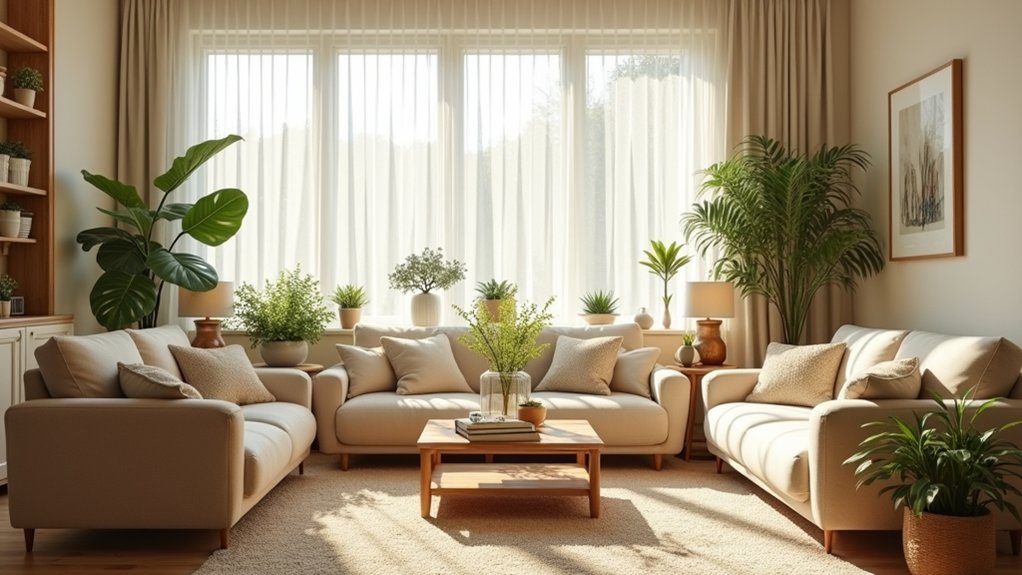
15 Beige Living Room Aesthetic Ideas That Are Clean and Natural
A beige living room exudes refined calm by layering textures like linen, velvet, and plush rugs on a cohesive palette spanning from soft cream to rich taupe. Organic elements—such as wood, stone, and woven accents—add grounding warmth, while subtle black or charcoal details create contrast and depth. Purposeful lighting enhances beige’s inherent softness, and thoughtful placement of art and greenery guarantees balance and visual interest. Explore further for inventive combinations and nuanced styling techniques.
Key Takeaways
- Layer various beige tones—from pale cream to deep taupe—for a multidimensional, sophisticated color palette.
- Incorporate natural materials like wood, stone, and woven baskets for tactile warmth and organic appeal.
- Use soft, warm lighting and layered light sources to enhance the cozy, tranquil atmosphere.
- Add greenery or botanical accents to introduce a fresh, clean contrast against the neutral beige backdrop.
- Select minimalist furnishings and textured accessories to maintain visual interest while ensuring a clean, uncluttered look.
Layer Textures for Depth and Warmth
Strategically layering textures in a beige living room establishes visual depth and tactile warmth, transforming a neutral palette into a sophisticated, multidimensional space.
By integrating soft furnishings such as velvet cushions, linen drapes, and plush area rugs, designers introduce diverse tactile sensations that amplify comfort. The juxtaposition of matte and glossy decor—such as ceramic vases against polished stone or wood—further heightens visual interest, allowing subtle beige tones to shift dynamically with light.
Woven baskets and knitted throws contribute organic layers, reinforcing a sense of coziness and spatial richness. To enhance the cozy aesthetic, consider layering cozy textiles like knitted throws and pillows, which add depth and texture to your space. This methodical layering of textures prevents the common pitfall of flatness in a warm beige living room, ensuring the space exudes both elegance and approachability while retaining the calming essence of its neutral palette.
Mix Beige Tones for a Sophisticated Palette
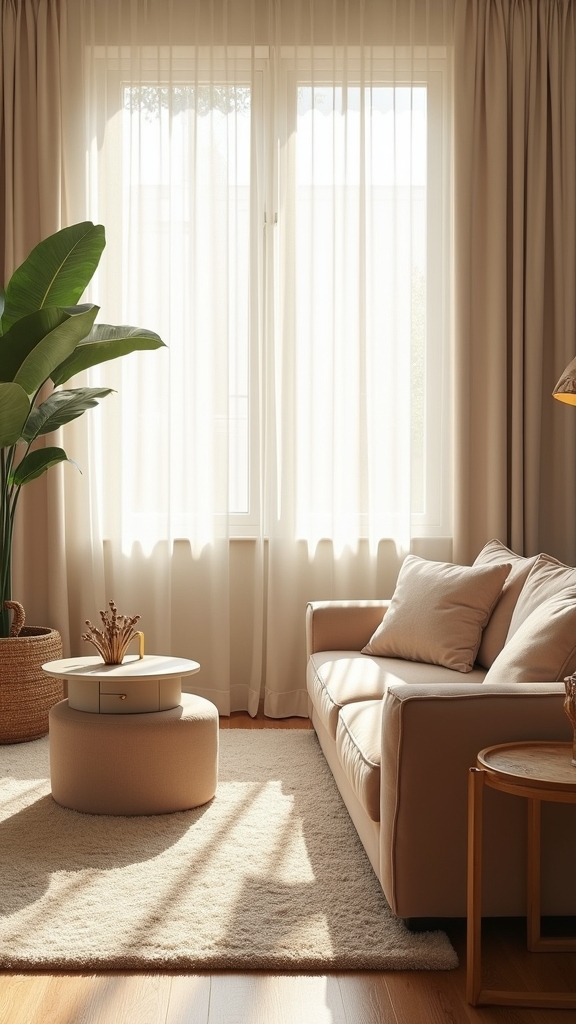
Building upon the interplay of textured surfaces, a nuanced approach to beige living room aesthetics involves curating a spectrum of beige tones for heightened sophistication.
By integrating shades ranging from soft creams to deep taupes and honeyed rusts, designers achieve a multidimensional, monochromatic palette that exudes a cozy ambiance while maintaining visual clarity.
A spectrum of creams, taupes, and honeyed rusts creates a cozy, multidimensional palette with enduring visual clarity.
Strategic layering of textures—plush upholstery, matte finishes, and subtle weaves—amplifies depth and tactile appeal within the spatial composition.
This calibrated tonal variation prevents monotony, ensuring the space feels both expansive and inviting.
Introducing natural accents, such as muted greens or terracotta elements, further enriches the palette, echoing organic harmony.
Ultimately, a cohesive yet varied selection of beige tones enables versatility, timelessness, and seamless adaptability for evolving decor preferences. By mixing shades from deep chocolate to soft taupe, you create a balanced palette that embodies comfort and elegance, ideal for a stunning living room aesthetic.
Incorporate Natural Materials Like Wood and Stone
As natural materials such as wood and stone are introduced into a beige living room, the palette gains a tactile richness and visual grounding that reinforces its connection to the earth. Wooden elements—ranging from sculpted walnut coffee tables to oak shelving—interact seamlessly with beige tones, their grain and finish contributing to spatial texture and depth. Stone, whether manifested in a hearth or as an accent wall, anchors the room architecturally, imparting a sense of rugged elegance that boosts the earthy aesthetic. Layering these with natural textiles like jute rugs or linen drapery amplifies the sense of organic cohesion. The earthy color palette enhances visual appeal and fosters serenity by connecting the decor to nature. The interplay of wood, stone, and beige creates a serene environment, enhancing both visual and sensory appeal in contemporary beige living rooms.
Use Beige as a Backdrop for Statement Art
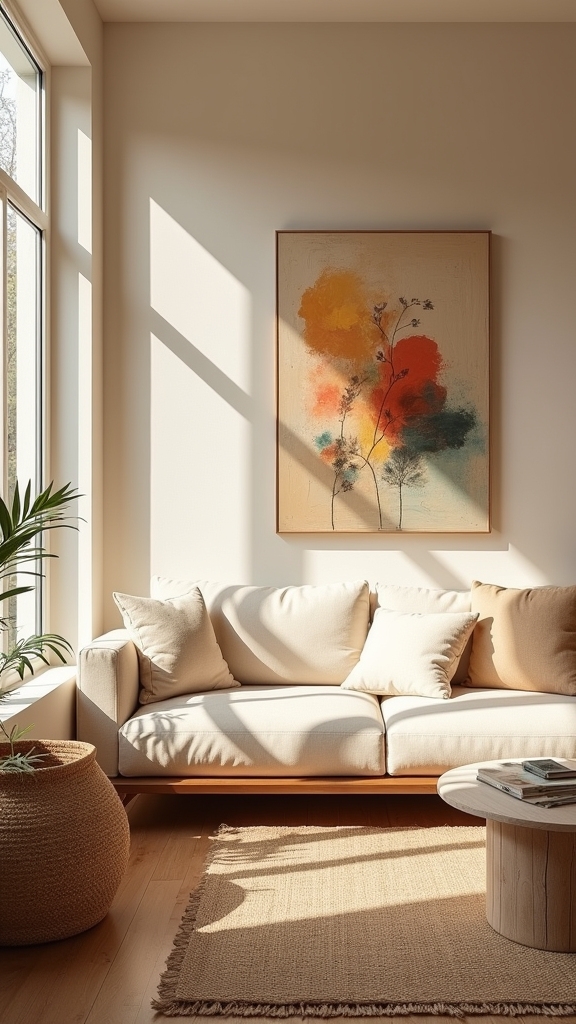
Beyond the tactile warmth of wood and stone, beige walls provide an expansive, unifying canvas that enhances statement art within the living room. The inherent neutrality of beige walls establishes a calming environment, allowing bold or large-scale statement art to become a deliberate focal point without visual competition.
Monochrome pieces—especially those with black and white accents—achieve contemporary appeal, their crisp lines and contrasts intensified by the warm undertones of the beige backdrop. Spatially, this approach amplifies both the art and the architectural flow, inviting the eye to linger while maintaining visual harmony.
For maximum cohesion, selecting artwork that resonates in tone with the overarching beige palette guarantees the space feels purposefully curated, sophisticated, and welcoming, accentuating both tranquility and modernity in equal measure.
Add Visual Interest With Subtle Patterns
While beige living rooms are celebrated for their tranquil simplicity, the introduction of subtle patterns can expertly transform flat expanses into dynamic, visually layered environments.
Utilizing lightly textured fabrics, herringbone motifs, or delicate florals in elements such as rugs and cushions, designers achieve visual depth without compromising the serene essence of the space.
Lightly textured fabrics and gentle patterns in rugs and cushions add depth to beige spaces while preserving their calming ambiance.
Tonal patterns—variations of beige and cream—further enhance dimension while reinforcing a cohesive design.
Layered textiles, such as a patterned throw draped over a solid beige sofa, invite tactile engagement and foster a sophisticated atmosphere.
Minimalistic patterned wall art or wallpaper, selected with restraint, can serve as understated focal points, harmoniously blending with the beige palette.
Through strategic placement and scale, subtle patterns maintain spatial balance while elevating the overall aesthetic.
Introduce a Standout Accent Color
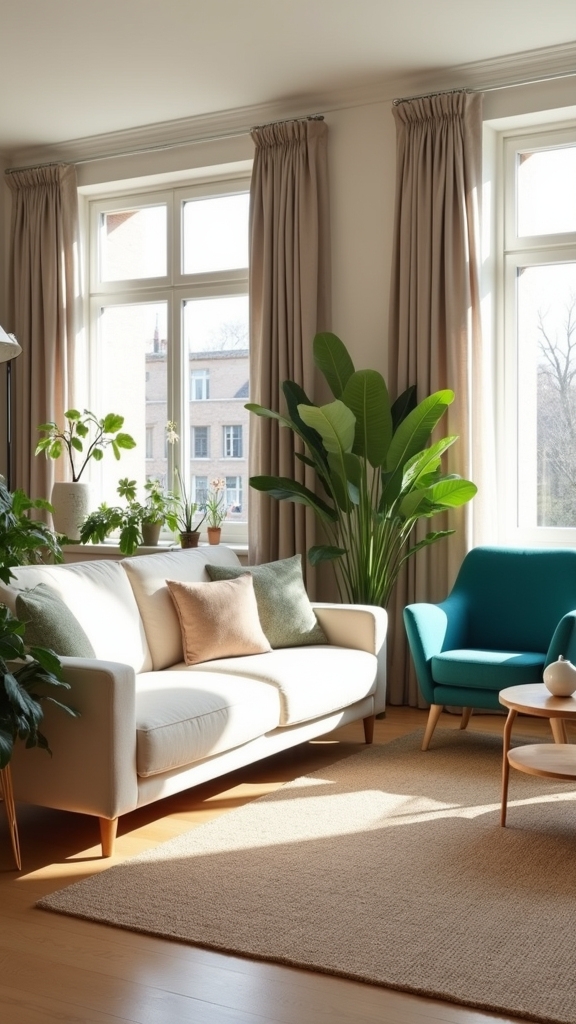
Though beige living rooms exude calm sophistication, the deliberate introduction of a standout accent color serves as a strategic focal point, energizing the visual field without disrupting the room’s soothing neutrality.
The interplay between a neutral palette and a carefully chosen accent color—such as deep blue, vibrant green, or rich burgundy—amplifies visual interest and depth, guiding the eye and punctuating the space with intentional vibrancy.
To maintain a cohesive look, accent colors are best deployed in measured doses, ensuring spatial balance and design harmony.
Consider the following application strategies:
- Integrate accent color through throw pillows, curated artwork, or sculptural decorative objects.
- Select hues that contrast yet complement existing textures and materials for layered sophistication.
- Confine bold color usage to defined zones, preserving the beige living room’s tranquil ambiance.
Incorporating brown tones through various shades like caramel and chocolate in pillows and rugs can add warmth and depth to a space, enhancing the overall aesthetic.
Embrace Minimalist Furnishings and Clean Lines
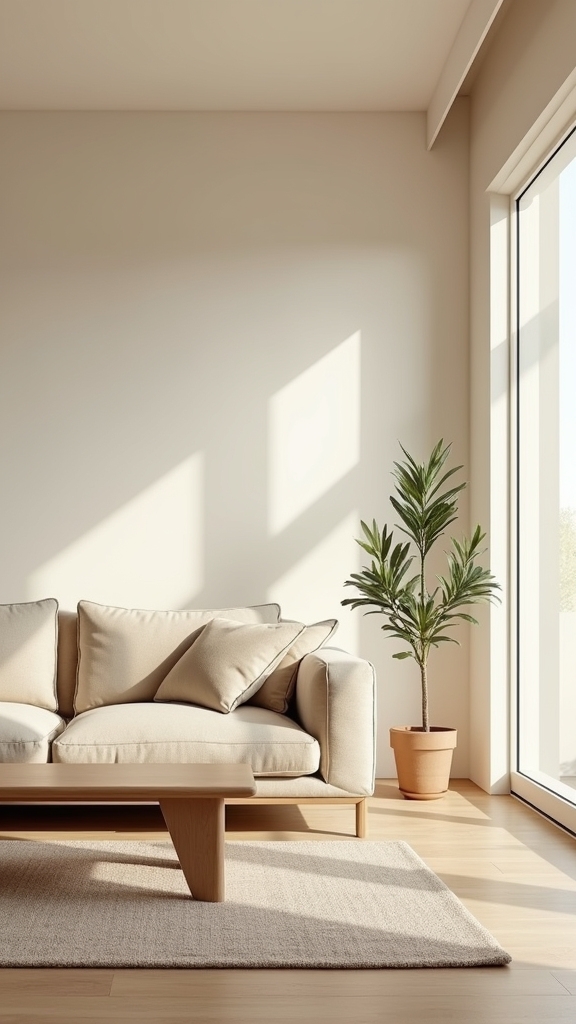
When executed with precision, minimalist furnishings and clean lines transform a beige living room into a study of visual clarity and spatial refinement. The interplay of sleek silhouettes and functional design guarantees that each furnishing—whether a sculptural coffee table or a streamlined sofa—serves both form and function. Utilizing natural materials such as wood, stone, and linen grounds the aesthetic, infusing the space with organic warmth and tactile appeal. A monochromatic beige palette enhances cohesion, while low-profile pieces maximize openness and invite light. Select accent elements provide visual interest, avoiding clutter and maintaining a sense of calm. Integrating smart storage solutions ensures that the living room remains clutter-free and enhances the minimalist aesthetic. The table below demonstrates core strategies for integrating minimalist furnishings and clean lines within a beige living room:
| Element | Material | Visual Impact |
|---|---|---|
| Sofa | Linen | Airy, seamless |
| Coffee Table | Stone | Sculptural focal |
| Side Chair | Wood | Organic accent |
| Shelving | Metal/Wood | Linear, structured |
| Lighting Fixture | Glass/Metal | Subtle illumination |
Warm up Spaces With Soft Beige Fabrics
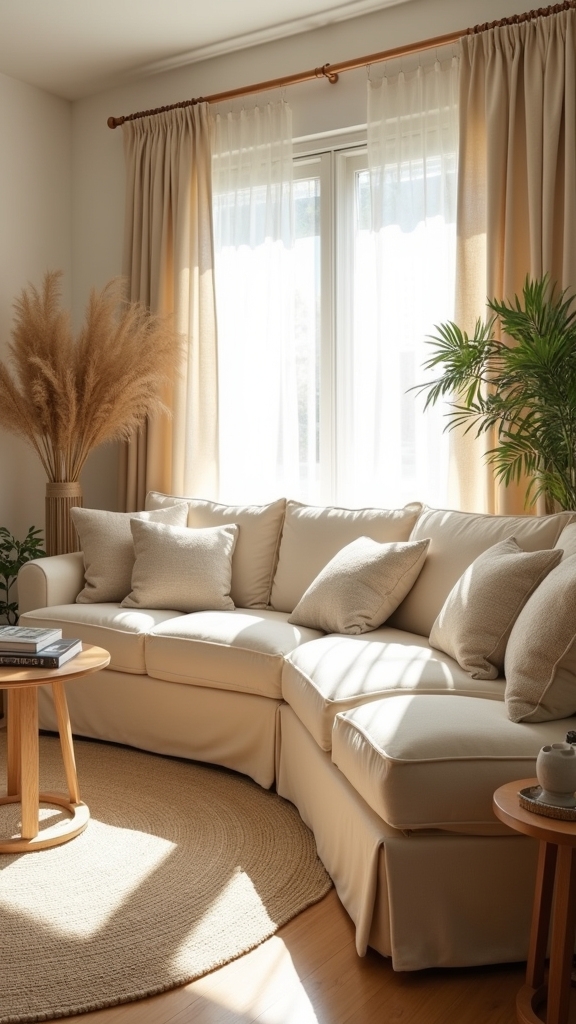
A selection of soft beige fabrics—ranging from linen upholstery to cotton throws—serves as a foundational element in cultivating warmth within a living room. This palette of textiles not only introduces tactile richness but also enhances the visual cohesion of a neutral space. The strategic layering of soft beige materials—such as plush area rugs, textured cushions, and silky drapery—elevates both comfort and spatial harmony, reinforcing a cozy living room aesthetic. These textiles reflect natural light, amplifying a clean, airy ambience while preserving an inviting atmosphere. Designers often advocate for the following sophisticated incorporations: – Layered beige throws and cushions for dynamic texture – Soft beige drapery to optimize light diffusion and spaciousness – Coordinated upholstery and rugs for seamless, tranquil shifts. Incorporating natural textures through elements like wooden accents and woven accessories can further enrich the overall aesthetic, adding depth and organic appeal. Such thoughtful textile choices underscore timeless elegance and adaptability.
Bring in Greenery for a Fresh Neutral Contrast
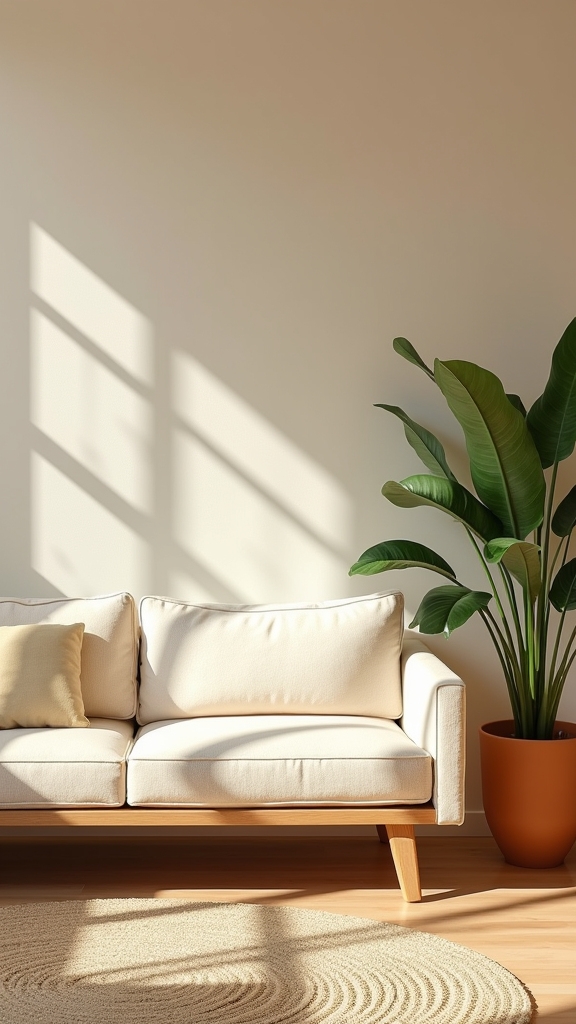
Integrating verdant plants introduces a striking chromatic contrast against beige, instantly elevating the room’s visual narrative. Lush botanical accents serve as focal points, punctuating the serene neutral backdrop with natural vibrancy. Thoughtful spatial arrangement of greenery enhances depth and atmosphere, cultivating a tranquil yet dynamic living environment. Consider incorporating plants like Monstera Deliciosa, with its iconic split leaves, to add tropical elegance and serve as a captivating centerpiece.
Elevate Beige With Plants
Though beige offers timeless versatility, introducing vibrant greenery immediately enlivens the living room’s ambiance.
Carefully selected indoor plants—such as snake plants or pothos—infuse the space with lively green hues, creating a striking visual contrast that accentuates beige tones. The interplay between the neutral color palette and botanical elements not only enhances visual interest but also fosters a calming atmosphere.
Strategic placement of plants at varying heights and in decorative pots with earthy textures integrates them seamlessly into the room’s design language.
- Incorporate a diverse array of indoor plants for dynamic layering and spatial depth.
- Opt for pots in natural, textured finishes to reinforce the cohesive beige palette.
- Position plants thoughtfully to break monotony and boost air quality, ensuring an inviting, tranquil living environment.
Lush Accents, Serene Backdrop
When cascading greenery is introduced into a beige living room, the visual equilibrium between lush accents and a serene backdrop becomes immediately apparent.
The deliberate placement of plants, such as snake plants, pothos, or fiddle leaf figs, injects living texture and color into beige interiors, enhancing spatial depth. The varying shades of green in foliage deliver a natural gradient, which harmonizes with the warm, neutral palette while reinforcing a tranquil atmosphere.
Decorative planters—crafted from terracotta or woven materials—anchor the greenery, echoing the organic undertones of the space. This method not only boosts aesthetic value but also contributes to improved air quality.
Thoughtful integration of greenery establishes a fresh, inviting zone that remains understated yet visually dynamic within the context of beige living room design.
Highlight Architectural Features With Beige
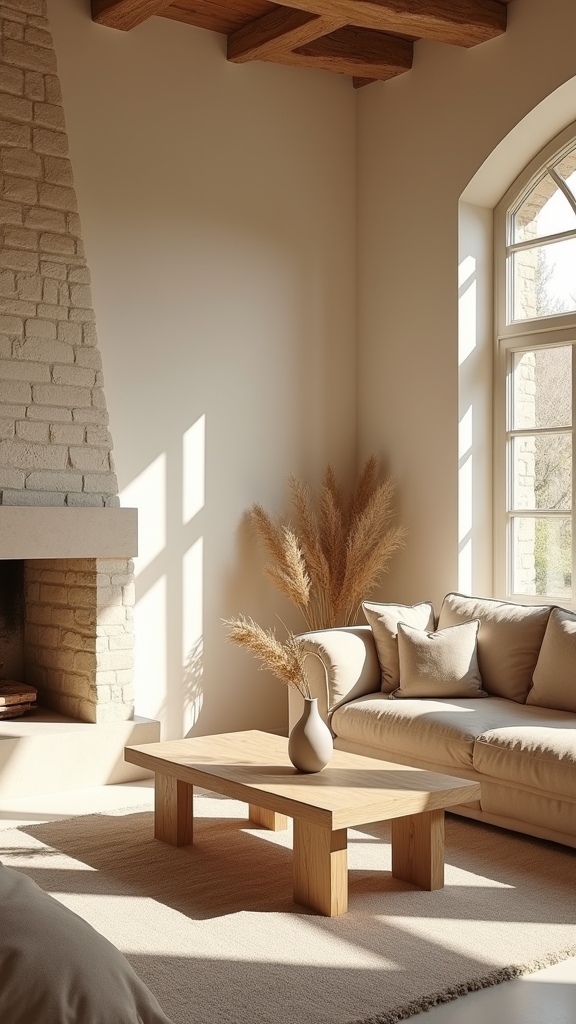
Strategic use of beige tones can accentuate architectural elements such as exposed beams and ornate trim, allowing these features to become focal points within the spatial composition.
A beige palette on fireplace surrounds draws the eye to the hearth while maintaining visual harmony with the rest of the room.
Unique alcoves can be showcased through subtle shifts in beige hues, introducing depth and articulating the room’s structural character.
Accentuate Beams and Trim
Architectural definition emerges in a beige living room by accentuating beams and trim, allowing structural elements to become focal points within the space.
Employing beige tones in various intensities on beams and trim not only enhances architectural features but also establishes visual contrast and spatial depth. Selecting slightly darker or taupe variations for beams against lighter walls highlights their geometry, while textured finishes such as matte or satin offer a refined, tactile dimension.
The harmonious interplay of complementary shades unifies the overall scheme, ensuring cohesion without sacrificing airiness. This approach maximizes natural light and crafts an inviting atmosphere.
Key strategies include:
- Utilizing contrasting beige tones to emphasize structural details
- Applying textured finishes for visual and tactile interest
- Coordinating complementary shades to maintain spatial cohesion
Emphasize Fireplace Surrounds
Building upon the visual impact created by accentuated beams and trim, the fireplace surround emerges as another opportunity to highlight architectural features using beige. A beige fireplace surround, crafted from natural materials such as stone or wood, anchors the living room with understated elegance. By employing neutral tones in varying shades, designers achieve nuanced depth and subtle contrast, ensuring the fireplace becomes a warm focal point without overwhelming the space. Accent lighting intensifies this architectural highlight, casting gentle shadows and enhancing textural qualities. Surrounding the fireplace with soft-textured furnishings and organic elements furthers the connection to a clean, harmonious aesthetic.
| Design Element | Material Example | Visual Effect |
|---|---|---|
| Fireplace Surround | Beige stone | Warm, grounding focal |
| Accent Lighting | Recessed LEDs | Enhanced dimensionality |
| Furnishings | Textured linen sofas | Soft, inviting ambiance |
Showcase Unique Alcoves
When alcoves are thoughtfully highlighted within a beige living room, they become intentional spatial punctuations that enhance the architectural narrative. Integrating alcoves as focal points draws the eye to distinctive architectural features, establishing depth and visual hierarchy.
Employing a nuanced beige palette—such as deeper taupe or sand—creates striking textural contrasts against lighter walls, ensuring the alcoves remain visually compelling yet cohesive. Accent lighting within these recesses softly illuminates display objects or built-in shelving, amplifying their sculptural quality while contributing a warm, layered ambiance.
- Subtle shifts in beige hues delineate alcoves, reinforcing spatial depth and architectural clarity.
- Carefully curated accent lighting emphasizes contours and enriches the tactile experience of alcoves.
- Incorporating natural materials or soft textiles within alcoves maximizes their design impact and functional value.
Play With Light and Dark Beige Accents
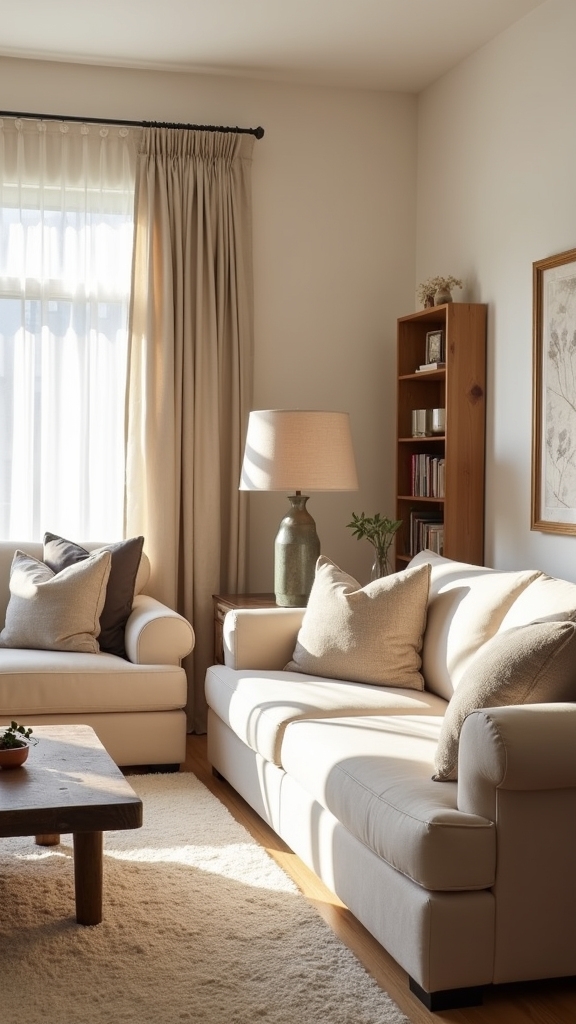
Light beige tones in furniture and textiles establish a serene, airy backdrop, reinforcing a clean and natural aesthetic. Contrasting this, dark beige elements—whether as accent walls, a plush sofa, or decorative objects—anchor the space, introducing grounding undertones while enhancing visual interest. This interplay between shades fosters a cohesive color scheme that feels both sophisticated and inviting. The gradient effect, moving from pale to deeper beige, prevents monotony and adds dimension without overwhelming the senses. Strategic placement of light and dark beige guarantees the room remains adaptable, supporting both minimalist and cozy design intentions while maintaining the integrity of a tranquil, unified environment. Incorporating warm lighting can further enhance the cozy ambiance of a beige living room, creating a welcoming atmosphere through the use of dimmable options and warm white LED bulbs.
Personalize With Unique Accessories
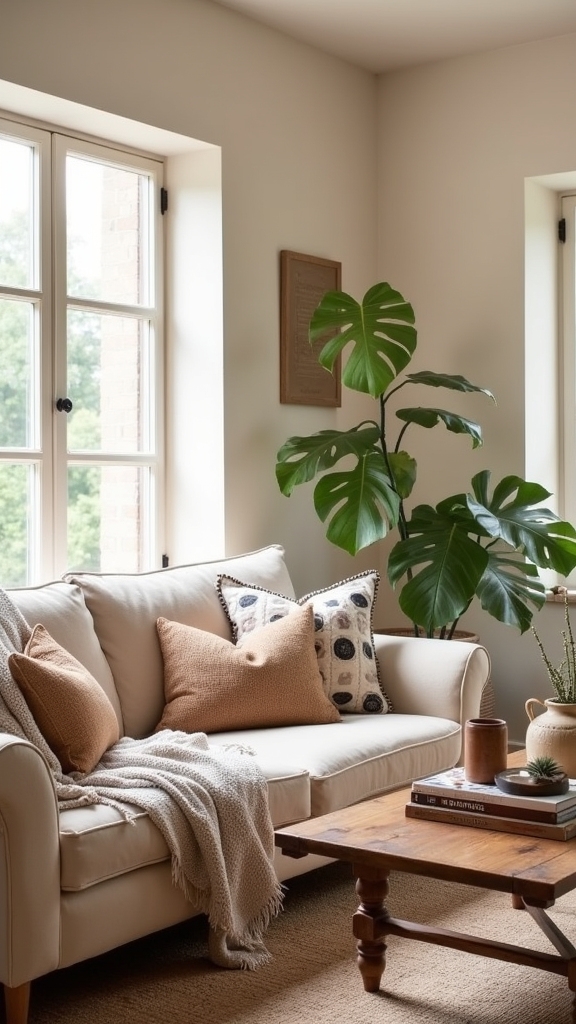
Showcasing meaningful art pieces on feature walls introduces focal points that transcend the neutrality of a beige palette. Strategically incorporating statement decor items, such as oversized sculptures or distinctive lighting fixtures, enhances the spatial narrative and draws the eye. Through thoughtful placement and proportion, these personalized accents infuse individuality while preserving the room’s harmonious aesthetic. Consider integrating textured wall panels to add depth and interest, merging form and function in modern design principles.
Showcase Meaningful Art Pieces
Although a beige living room provides a serene and versatile canvas, the introduction of meaningful art pieces instantly establishes a compelling focal point within the space.
Thoughtfully curated art offers dramatic contrast to the understated neutrality of beige, drawing the eye and enhancing spatial depth. Strategic placement—whether a bold canvas above the sofa or a gallery wall of smaller works—enlivens the room while maintaining cohesion.
Unique accessories, such as handcrafted vases or family heirlooms, further individualize the ambiance and reinforce the narrative embedded in each art selection.
- Select art with rich hues or intricate details to create dynamic visual contrast against beige walls.
- Arrange pieces in a gallery wall format for layered interest and balanced spatial distribution.
- Integrate accessories that echo the artwork’s palette or motifs for a harmonious composition.
Incorporate Statement Decor Items
Beyond curated art, the beige living room’s visual narrative is further enriched through the deliberate incorporation of statement decor items and personalized accessories. Statement art pieces—such as oversized canvases or sculptural forms—serve as dynamic focal points, punctuating the serene neutrality of beige living room ideas. Carefully selected accent pieces in diverse materials, from woven baskets to metalwork, introduce tactile contrast and spatial depth. Unique decorative items, including handcrafted ceramics or vintage treasures, personalize the space and foster a distinct aesthetic identity. To maintain seasonal relevance, rotating vibrant cushions or themed decor preserves the foundational palette while injecting freshness. Thoughtfully arranged family photos or travel mementos in cohesive frames add warmth and narrative resonance to the overall scheme.
| Decor Type | Material/Style | Visual Impact |
|---|---|---|
| Statement Art Piece | Canvas, Sculpture | Focal Point, Bold |
| Accent Piece | Woven, Metal, Ceramic | Textural, Layered |
| Personal Accessory | Photos, Souvenirs | Warmth, Storytelling |
| Seasonal Item | Cushions, Ornaments | Refresh, Dynamic |
Define Zones Using Color and Texture
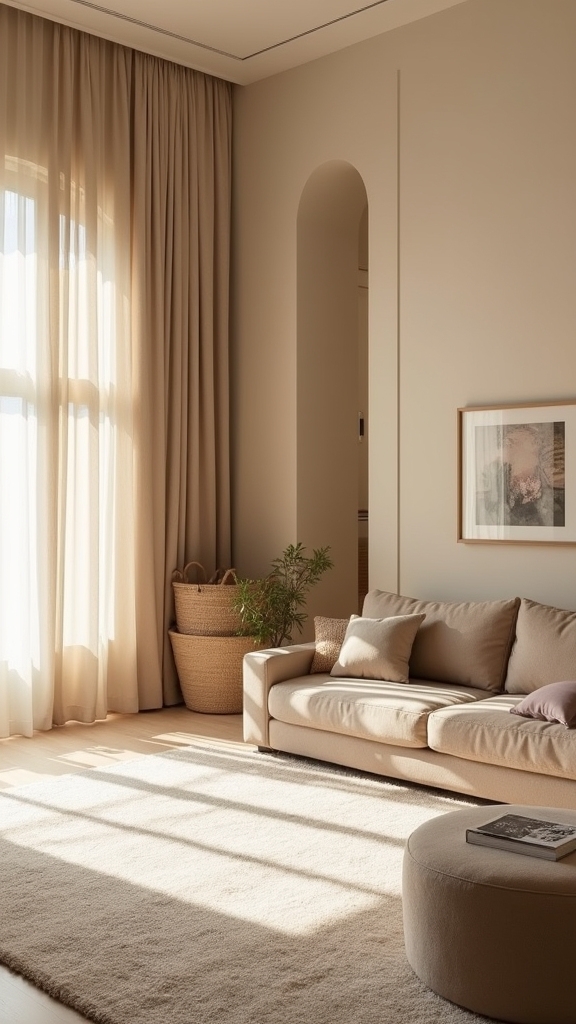
When defining zones within a beige living room, spatial distinction can be achieved through a strategic interplay of color gradients and tactile materials. Utilizing varying warm shades of beige to delineate different areas establishes subtle boundaries without disrupting visual cohesion.
Expertly layered textures—soft textiles for seating zones contrasted with the organic ruggedness of stone accent walls—create visual and sensory differentiation between functional spaces. This method not only enhances the living space’s aesthetic but also guides movement and interaction with effortless fluidity.
Area rugs delineate zones while adding warmth and texture, helping to define seating areas and visual boundaries.
To further articulate these zones, designers employ:
- Layered area rugs in contrasting textures and shapes to visually segment activity and relaxation spaces
- Accent colors, such as earth tones or muted hues, that define the purpose of each zone
- Purposeful furniture arrangements that naturally demarcate distinct living areas
Balance Beige With Black or Charcoal Details
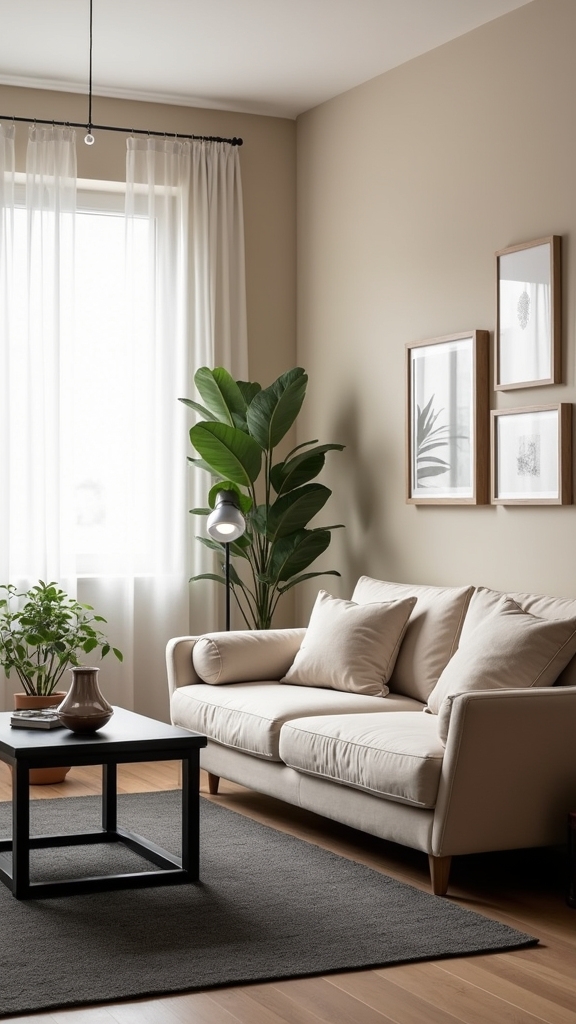
A measured infusion of black or charcoal elements within a beige living room creates a refined interplay of contrast that anchors the overall design.
The beige backdrop serves as a versatile canvas, allowing strategically placed black accents—such as minimalist picture frames, geometric vases, or sculptural lighting—to punctuate the space with crisp definition.
Charcoal details introduced through textiles, including cushions or throws, introduce layered textures while softening the visual impact, achieving a harmonious equilibrium between warmth and modernity.
Incorporating black or charcoal furniture, like a streamlined coffee table or accent chair, establishes an elegant focal point, enhancing visual interest and spatial hierarchy.
This balanced approach amplifies depth and sophistication, imbuing the living area with a sense of curated drama that remains inviting and cohesive.
Create a Cozy Atmosphere With Layered Lighting
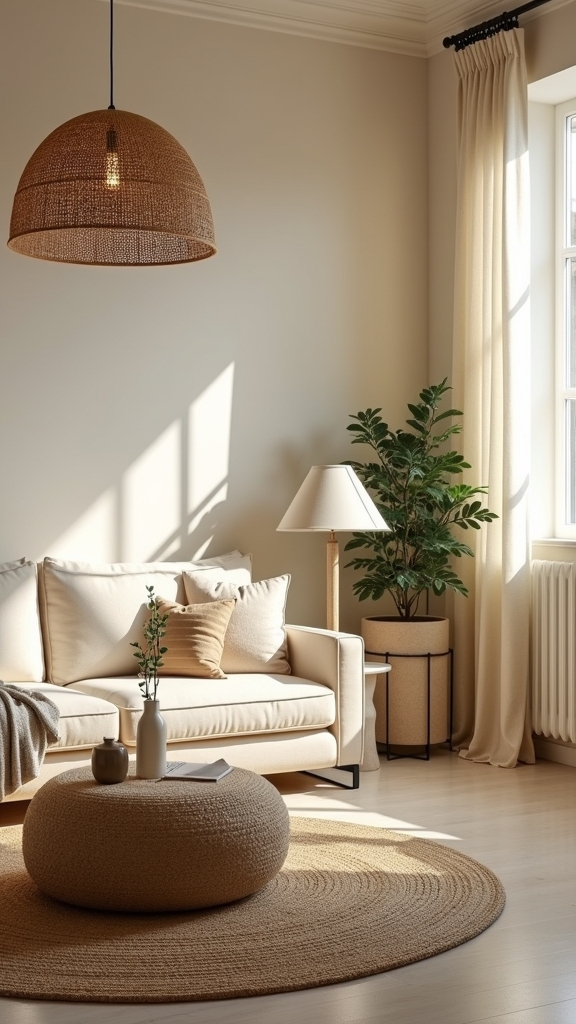
A sophisticated beige living room benefits from a strategic interplay of ambient and task lighting, ensuring both functional illumination and atmospheric depth.
Warm-toned bulbs are essential, as they amplify the inherent softness of beige while preventing clinical overtones.
Illuminating textured accents—such as woven lampshades or sculptural sconces—introduces tactile dimension and visual warmth, reinforcing the room’s inviting character.
Combine Ambient and Task
By thoughtfully integrating ambient and task lighting, a beige living room can attain both visual warmth and functional versatility.
Layered lighting is essential to accentuate the subtle sophistication of a neutral palette. Ambient lighting—overhead fixtures or soft wall sconces—sets the foundational glow, while strategically placed task lighting, such as floor or table lamps, delivers focused illumination for reading or conversation.
The interplay of multiple lighting heights enhances spatial depth and dimension, amplifying the room’s airy openness. Utilizing dimmable sources guarantees adaptability to various activities and times of day, reinforcing a cozy atmosphere.
Expert use of warm tones in lighting fixtures maintains cohesion with the overall scheme.
- Employ ambient lighting as a foundational layer
- Integrate task lighting for targeted functionality
- Vary lighting heights to create spatial depth
Use Warm-Toned Bulbs
Building on the foundation of layered lighting, the selection of warm-toned bulbs—typically between 2700K and 3000K—infuses a beige living room with a gentle, inviting radiance.
These bulbs enhance the inherent warmth of the color palette while reinforcing a cozy atmosphere that feels both tranquil and sophisticated.
Strategically integrating warm-toned bulbs in ambient lighting fixtures, such as ceiling lights, table lamps, and wall sconces, establishes visual depth and spatial balance.
Layered lighting, achieved through the combination of ambient, task, and accent sources, not only adds dimensionality but also supports functional needs.
The adoption of energy-efficient warm-toned LED bulbs guarantees sustained luminosity without harshness, while dimmer controls enable precise modulation of mood.
This careful orchestration transforms ordinary beige spaces into serene, welcoming environments.
Highlight Textural Accents
Several thoughtfully placed textural accents can enhance the visual richness of a beige living room, especially when enhanced by layered lighting.
Integrated lighting solutions—such as ambient ceiling lights, targeted sconces, and flexible floor lamps—create a multidimensional environment that accentuates the tactile qualities of woven baskets, plush throws, and tactile upholstery.
The interplay between lighting and texture heightens spatial depth, ensuring the beige palette remains visually engaging and inviting. Expertly orchestrated illumination, particularly with warm-toned bulbs, uplifts these textural accents, casting nuanced shadows and highlights that promote a cozy ambiance.
- Layer ambient, task, and accent lighting to define zones and emphasize texture.
- Use dimmable light sources to create adaptable, inviting atmospheres.
- Illuminate woven or plush textural accents to draw visual focus within the beige environment.
Frequently Asked Questions
How Do I Choose the Right Shade of Beige for My Living Room Walls?
Selecting the right shade of beige involves evaluating natural light, considering beige color psychology, and balancing warm beige tones with cool beige shades. Expert designers recommend beige accent walls and harmonious beige color combinations to optimize visual flow and spatial depth.
Are Beige Living Rooms Suitable for Homes With Pets or Young Children?
Suitability of living rooms for pets or young children depends on integrating pet friendly furniture, child safe decor, stain resistant fabrics, easy clean rugs, and durable wall finishes, ensuring visual harmony, spatial functionality, and long-term aesthetic integrity within the interior environment.
What Paint Finishes Work Best for Beige Living Room Walls?
Selecting paint finishes for living room walls involves considering durability and light reflection. Satin finish and eggshell sheen offer subtle luster with easy cleaning, while matte finish and flat paint provide a softer look. Semi gloss enhances architectural details.
How Can I Prevent a Beige Living Room From Feeling Boring or Bland?
To avoid monotony, one should integrate accent colors for visual contrast, select textured fabrics for tactile depth, incorporate artistic decor as focal points, utilize statement furniture to anchor zones, and employ layered lighting for spatial dimension and ambiance.
Which Beige-Friendly Flooring Options Are Most Durable and Easy to Maintain?
Selecting flooring that balances longevity and minimal upkeep, experts recommend vinyl plank for water resistance, tile options for visual continuity, carpet durability for comfort, laminate choices for cost-effectiveness, and cork flooring for eco-friendly, cushioned underfoot experience.
Conclusion
A beige living room, when curated with expert attention to texture, materiality, and tonal layering, transcends neutrality to achieve sophisticated warmth. Strategic interplay of natural elements, subtle patterning, and curated accessories fosters both visual depth and spatial harmony. Balanced contrasts—such as black or charcoal accents—and thoughtful lighting enrich the overall ambiance. Ultimately, a well-designed beige aesthetic delivers a clean, inviting environment, where every element contributes to a cohesive, tranquil, and visually compelling living space.
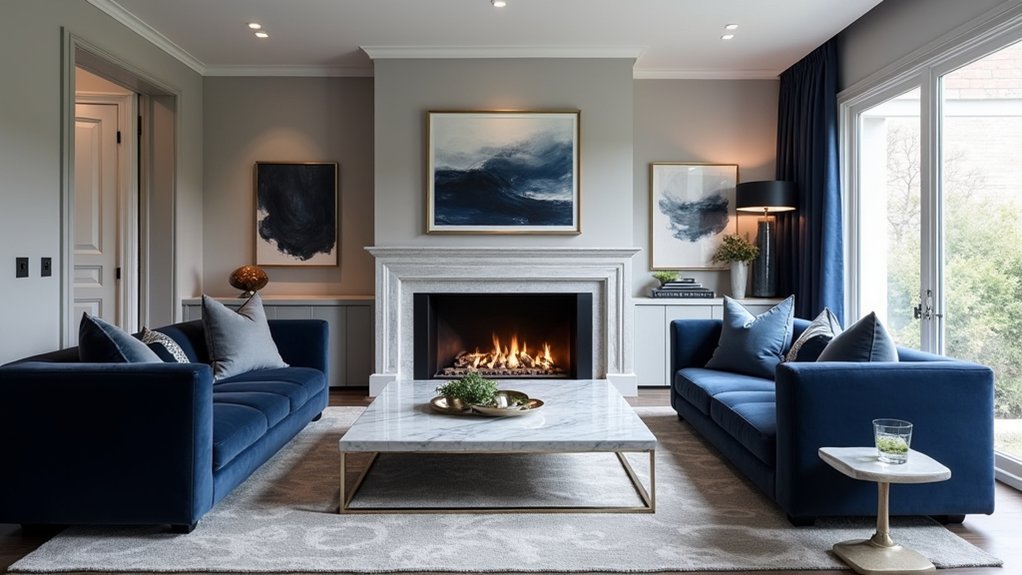
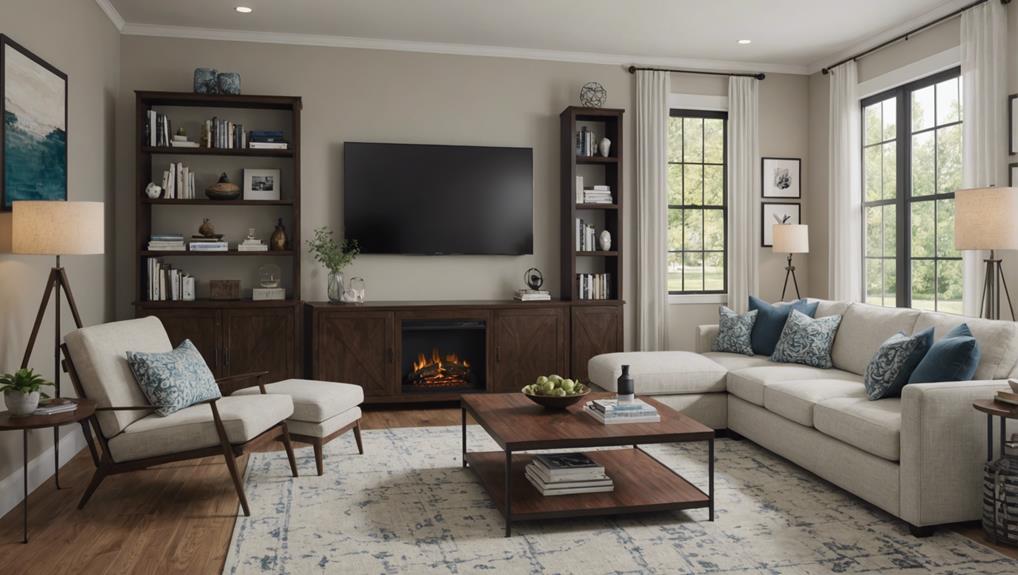
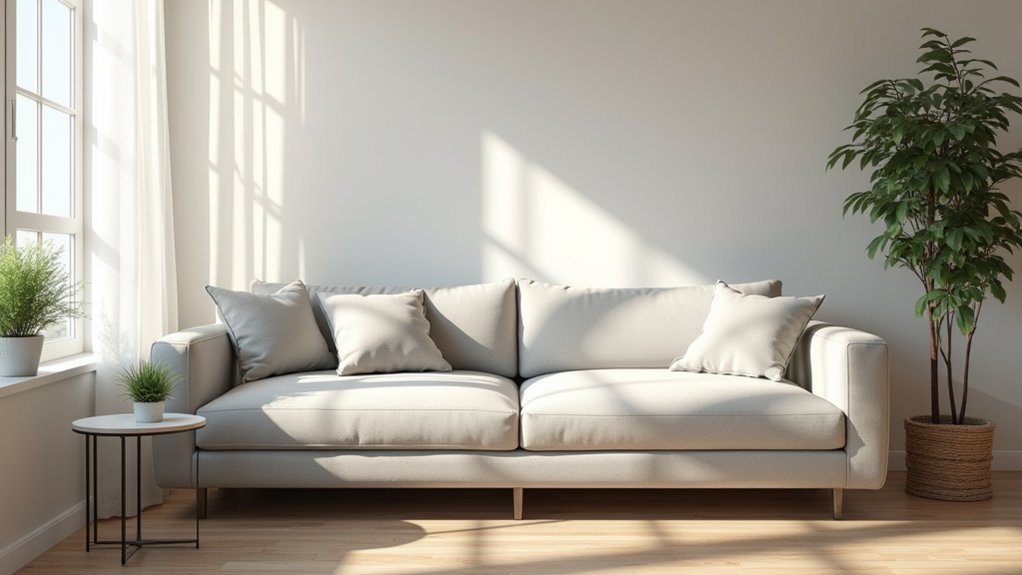
Leave a Reply